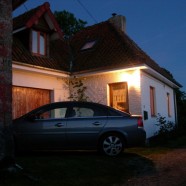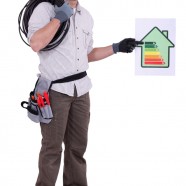5 Steps to Achieving Industrial Energy Savings
Industry uses about one third of all the energy consumed in this country, but most companies don’t have a comprehensive policy for saving energy. It takes a combination of the best technology upgrades and best practice efficiency for your company to show its best reduction in use, but with careful strategy and implementation you can find ways to achieve positive results.
#1: Look for Financial Incentives
Doing an energy upgrade to your business may be a daunting proposition, but there are many financial incentives that can take the sting out of an otherwise pricey project. Commercial and governmental agencies have all given great weight to industrial energy savings, and are rewarding business owners who comply with new standards. Depending on your industry, you may find:
- Loans, rebates, or grants to help cover the cost of any retrofitting or installation of new equipment or supplies
- Income tax deductions for business owners or businesses for following stricter energy use standards
- Reduced sales tax or tax exemptions on certain energy-efficient products
- State government or utility company financial incentives
#2: Review Your Energy Plan
The first step in reducing your industry’s energy use is to develop a comprehensive reduction plan. Get a professional electrical contractor to inspect your physical plant as well as observing your day-to-day operations. New habits and best practices can result in significant savings, just like more efficient equipment can, and an expert will be able to advise you on all aspects of this. Retain a professional commercial designer to develop and lay out a comprehensive plan that show you, step-by-step, just how it will save energy for your business.
#3: Upgrade Your Equipment
The largest investment in your business is doubtless the equipment, and you need to be sure that you have the best, most efficient models of each type in use. Assess each item of equipment to determine whether it’s efficient enough, or if it’s using more energy than a newer model would. The larger the piece of equipment, the more energy savings you can find in most cases. If necessary, obtain expert advice on equipment such as boilers, wiring and circuit breakers, coolers and chillers, internal emergency power sources, and lighting fixtures. Investigate whether it’s possible to renovate your existing equipment for better energy efficiency, and find out what’s involved in specialized installations of any new items.
#4: Change Up the Lighting
Lighting is one of the simplest changes a business can make, and yet it can make a significant difference in industrial energy savings. In some companies electrical lighting accounts for up to 40 percent of the total electrical usage. Change out all your fluorescent and incandescent light bulbs and replace them with more energy efficient LED bulbs. They’re brighter, they use a fraction of the energy as traditional bulbs, and they last years or decades instead of just months.
#5: Invest in Energy Star Certified Equipment
More and more, companies and individuals are making business decisions based on environmental factors as well as economical ones. The Environmental Protection Agency has an Energy Starcertification program for industrial plants. If your company falls within their performance levels, you’ll be eligible to display the Energy Star logo and advertise as a certified green industry. With all the interest in green living and the environment, this certification can be a large factor in business decisions, and an edge you’ll have over your competitors.
Contact us for help developing a comprehensive industrial energy savings program from strategy through to final inspection.
Read MoreWhat Generator Size Do I Need in South Florida?
Here in south Florida, hurricanes, tropical storms, and wild thunder and lightning are common occurrences. Along with putting away the lawn furniture and tying the tree limbs, we’ve also got to be ready for the inevitable loss of power that happens multiple times a year. Some power outages are short term situations, only lasting an hour or two. But with the worst of storms, the power can stay off for days at a time while workers try to get the infrastructure back in shape.
If the storm is bad enough, you may opt for taking yourself and your family out of the area, closing up your house in the meantime. But if you plan to stay, or if you’re taking unawares, you may be stuck for a long time with no electricity to run your appliances. This can cause a real problem, and end up costing you a lot of money for lost food, along with the inconvenience and uncomfortable living. This is where a generator begins to make sense.
Your Minimum Needs
You may never think about everything in your life that electricity powers until you lose it. It would not be cost-effective to get a generator that can run everything in your household, but there are a few items that are crucial to keep going.
- Refrigerator
- Several lights
- Sump pump
- Microwave
- Television
What Size Generator Do I Need?
The size of your generator completely depends on how much power you want, and what you feel is the minimum for living during a power outage. If you can get by on just the bare basics, a smaller model will do. If your life won’t be complete without a computer and central air conditioning, you’ll need a more serious machine.
A small portable machine of 3,000 to 4,000 watts will run the basics on an average house. This includes the absolute bare minimum to get by during an outage.
A mid-sized portable machine with 5,000 to 8,500, can make your life a little easier. It can add a computer, a portable heater, a second sump pump, or more lights to the mix.
Move up to a large portable of around 10,000 watts and you’ll be able to run a small water heater, air conditioning, and an electric stove.
The largest generators available for home use are permanent installations of 10,000 to 15,000 watts. As long as they have fuel in them, they will basically run your entire house without a break in your service, just as if the rest of the neighborhood weren’t out of power.
How to Choose
The size of generator you need depends on quite a few factors. Do you have elderly people, infants, or those who are ill living in your home? You may need to keep the air conditioning on no matter what, requiring a more powerful piece of equipment. Is your family filled with rugged individualists and small children who will think camping out in the living room is an adventure? The smallest possible generator that just powers the refrigerator to keep your food safe might do the job.
Money is also something to consider, as each type of generator costs more than the smaller version before it. Don’t make money the only issue, though, since you may get a discount on your insurance if you have a generator, plus you’ll save money by not losing pounds of food during an outage.
Finally, before you think about installing a permanent generator, speak with an electrical contractor to find out how much home rewiring you’ll need to install. It may be a simple job, or you entire home may need to be redone for some of the more powerful systems. It’s a compromise between what you want and what you absolutely need, but getting some type of generator in south Florida is always a good idea.
Read MoreHow to Lower Your Utility Bills Through Home Energy Efficiency
One of the best ways to save money is not to spend it in the first place, and nowhere is that more evident than in your utility bills. A few basic changes can make significant marks on the amount of your electric and gas bills, while giving your home an energy makeover can save you up to half the amount you pay each month.
The first step is to assess your home for energy leaks and waste. Take a long look at your entire structure, from the attic to the basement, to determine where heat and cold are leaking out, what appliances should be replaced, and where you’re wasting money on utilities. Look for actual cracks or holes in walls, and feel for cold drafts around windows and doors. Be very critical; attention to detail now will pay off later in home energy efficiency.
Insulating and Sealing
Sealing in your home prevents hot or cold air from leaking out of small areas in your house. Insulating does the same thing for whole huge parts of the home. Both can contribute significant savings when done right, but not every home needs every technique done. Prevent wasting money by doing one or more of these tasks:
- Install weather stripping around all doors that lead to the outside
- Seal and caulk around all the windows in your home
- Seal air leaks around plumbing that goes into the wall
- Seal around the dryer exhaust where it vents outdoors
- Add insulation to the attic
- Insulate all heating ducts
Using Your Equipment Efficiently
Insulating and sealing your house will take care of the passive waste, the slow leaking that happens every day regardless of what you do. Make an even bigger impact on home energy efficiency by tackling active waste: the waste that you can prevent by making better choices and using your equipment more efficiently. Develop some useful habits that will save you money, year after year.
Change the air filter regularly, at least four times a year. Check it monthly, and change it if it’s dirty, but never go longer than three months before switching to a new one. Use a HEPA filter instead of the cheaper basic model and you may end up saving money on allergy medicines as well as utility bills.
Install a programmable thermostat to control your heating and cooling. Turning your air up and down are great ideas as you leave the house and return, but hardly anyone remembers every single time. A programmable thermostat will allow your system to work at a minimum level while you’re gone to work or school, and activate to a comfortable level right before you get home.
Get Regular Maintenance
Have your HVAC system serviced once a year. A professional will clean out your ducts, allowing air to move more efficiently through the house. Open ducts mean that your system doesn’t have to work so hard, which saves you money throughout the year.
Change Your System
Replace your heating and cooling system with a more efficient Energy Star system. If your furnace and air conditioning system are more than 10 years old, or if they’re simply not keeping you comfortable in extreme weather after you’ve sealed and insulated the house, it’s time to replace the old model for a newer version. One that’s Energy Star rated can save you enough money in home energy efficiency to eventually pay for itself over a decade or so, depending on how inefficient your old model is.
Read More
4 Reasons You Might Need Residential Rewiring During Renovations
A quick tour through South Florida will find charming neighborhoods filled with classic older homes. Instead of tearing down and rebuilding, savvy homeowners are renovating their existing buildings, saving money while keeping the unique Florida flavor. A lot of these classic older homes are structurally sound and mostly need cosmetic work, but it’s always a good idea to look at the wiring during a renovation. Residential rewiring isn’t just for putting plugs in more convenient places; it can be needed for many different reasons.
Increased Use
When many of these classic homes were built, entertainment included evenings around the radio and playing cards at the dining room table. With today’s increased electrical use, you’re pulling huge amounts of electricity through a system designed for minimal loads. Compare the electrical usage in the 1930s with today’s mega refrigerators, air conditioning, computers, and gaming systems. You’ll see why all but the most casual summer cottages are in the need of a rewiring job.
Older Hardware
Your older South Florida home may have been state-of-the-art when it was built, but it’s probably sadly out of date. Older electrical hardware is more likely to burn out, short out, or become a fire hazard than newer equipment. A quick search through your home during the renovation process can find some clues that your equipment needs replacing.
- Fabric covered wires instead of today’s modern vinyl or plastic coated variety
- Bakelite wall switches
- Ceiling lights with pull chains
- Electrical outlets with only two plug holes
A Fuse Box
One of the biggest clues that you have an older electrical system is that you have a fuse box instead of a modern circuit breaker. Fuses prevent electrical overload by burning out, just as a circuit breaker does when it flips a breaker, but they require replacement every time they blow. If your system is old enough to have fuses, it’s likely they’re blowing out often, because you’re using much more power than the system was designed for. Make a circuit breaker part of your residential rewiring to ensure your system is rated for safe usage.
Outdoor Living
Seventy years ago, outdoor home use usually meant sitting on the porch after dinner or letting the kids play in the yard after school. Now most South Florida homeowners consider their backyard as another room in the house. It’s great for entertaining, with barbecues, pools, and fire pits, and often used as an alternate dining room for many months of the year. With all these additions being done to the home, you’ll need lots of extra electrical wiring and outlets to handle it. From outdoor lighting for dining as well as security, to pool filters and landscape lighting, your residential rewiring job probably includes quite a bit of work outside of the house itself.
Read More




Recent Comments